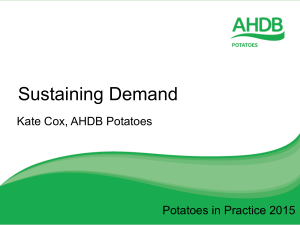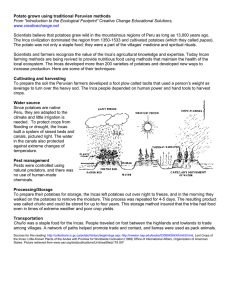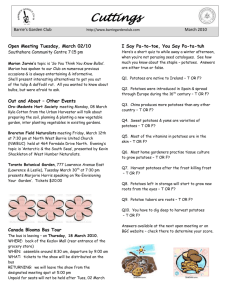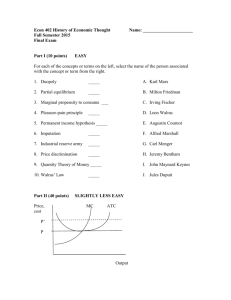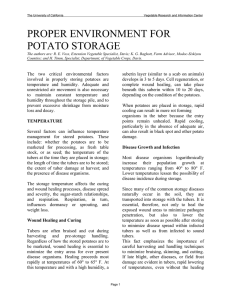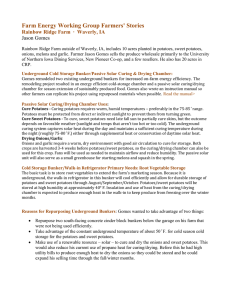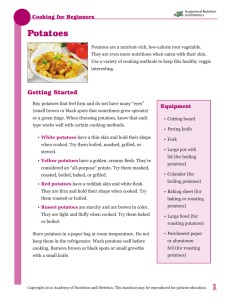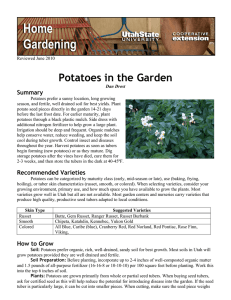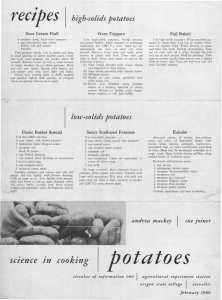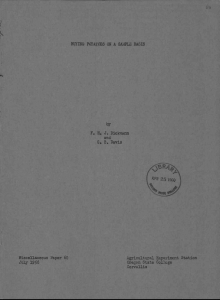IN SITU SOLANUM SPP Gisella S. Cruz
advertisement
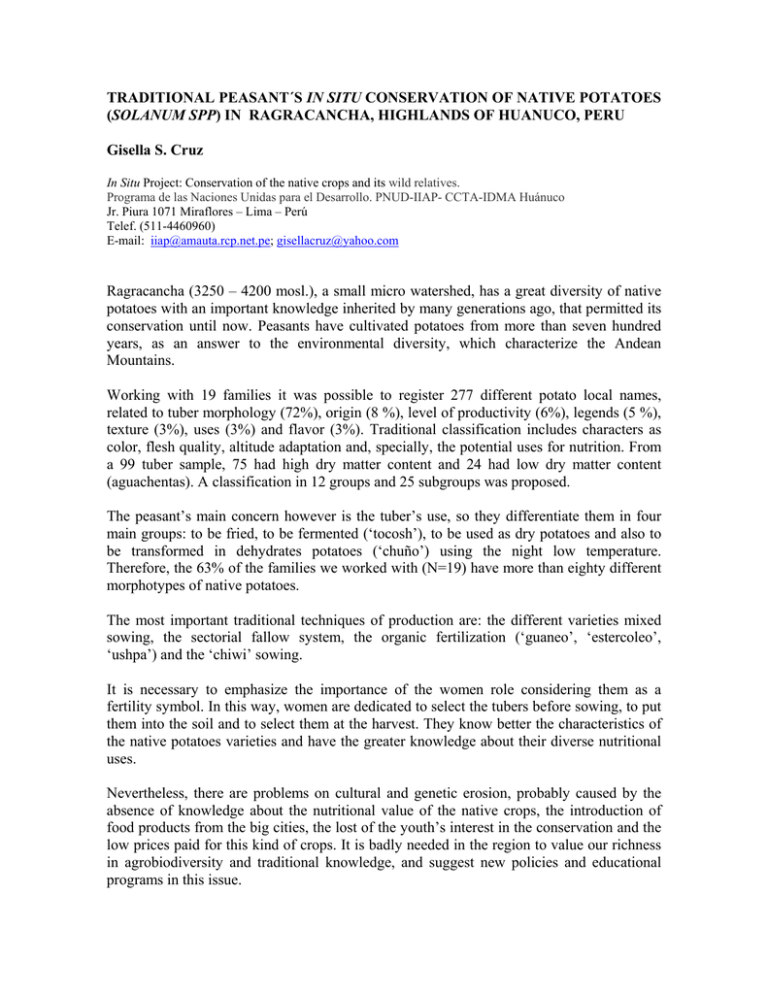
TRADITIONAL PEASANT´S IN SITU CONSERVATION OF NATIVE POTATOES (SOLANUM SPP) IN RAGRACANCHA, HIGHLANDS OF HUANUCO, PERU Gisella S. Cruz In Situ Project: Conservation of the native crops and its wild relatives. Programa de las Naciones Unidas para el Desarrollo. PNUD-IIAP- CCTA-IDMA Huánuco Jr. Piura 1071 Miraflores – Lima – Perú Telef. (511-4460960) E-mail: iiap@amauta.rcp.net.pe; gisellacruz@yahoo.com Ragracancha (3250 – 4200 mosl.), a small micro watershed, has a great diversity of native potatoes with an important knowledge inherited by many generations ago, that permitted its conservation until now. Peasants have cultivated potatoes from more than seven hundred years, as an answer to the environmental diversity, which characterize the Andean Mountains. Working with 19 families it was possible to register 277 different potato local names, related to tuber morphology (72%), origin (8 %), level of productivity (6%), legends (5 %), texture (3%), uses (3%) and flavor (3%). Traditional classification includes characters as color, flesh quality, altitude adaptation and, specially, the potential uses for nutrition. From a 99 tuber sample, 75 had high dry matter content and 24 had low dry matter content (aguachentas). A classification in 12 groups and 25 subgroups was proposed. The peasant’s main concern however is the tuber’s use, so they differentiate them in four main groups: to be fried, to be fermented (‘tocosh’), to be used as dry potatoes and also to be transformed in dehydrates potatoes (‘chuño’) using the night low temperature. Therefore, the 63% of the families we worked with (N=19) have more than eighty different morphotypes of native potatoes. The most important traditional techniques of production are: the different varieties mixed sowing, the sectorial fallow system, the organic fertilization (‘guaneo’, ‘estercoleo’, ‘ushpa’) and the ‘chiwi’ sowing. It is necessary to emphasize the importance of the women role considering them as a fertility symbol. In this way, women are dedicated to select the tubers before sowing, to put them into the soil and to select them at the harvest. They know better the characteristics of the native potatoes varieties and have the greater knowledge about their diverse nutritional uses. Nevertheless, there are problems on cultural and genetic erosion, probably caused by the absence of knowledge about the nutritional value of the native crops, the introduction of food products from the big cities, the lost of the youth’s interest in the conservation and the low prices paid for this kind of crops. It is badly needed in the region to value our richness in agrobiodiversity and traditional knowledge, and suggest new policies and educational programs in this issue.
